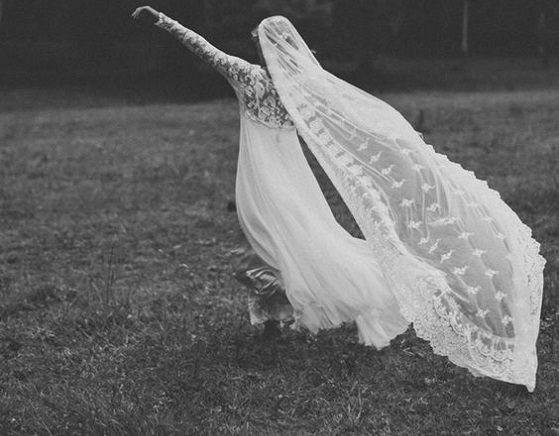Tantra and the Worship of the Goddess.

{source}
Recently, I had a conversation with a Sanskrit scholar and translator of Tantric works, which include the most scandalous parts of the Tantraloka (The light on Tantras).
On the patio of a cafe (to the delight of businessmen on their lunch breaks), we spoke about sexual Tantric experiences and their spiritual premises.
I do not claim to be a Tantric specialist. I am just a scholar by trade, and a writer and seeker by passion, and have studied the Tantra with those who certainly can call themselves specialists — at least in the scholarly world.
At the same time, I must admit that it is not an easy thing to define a specialist in Tantra because it is not easy to define Tantra itself.
To briefly summarize, one of the most important premises of Tantric philosophy is that there is nothing that is not sacred. This is a very radical premise in itself, as most, if not all, organized religions not only focus on the distinction between what is pure and what is impure (or sinful), and treat them as pair of opposites, but also make a living of making us feel like sinners.
Tantra is different. Tantra says that everything, the entire Universe/Creation, is sacred, is holy, that everything we do is sacred, even, or perhaps especially, those things we have been conditioned to believe to be impure or sinful, such as sexuality and sexual acts.
But this is with one very important provision — that we do them with a particular mindset or an intention on expanding our consciousness, which is nothing but experiencing oneness with the Divine Consciousness. Thus even in the sexual act, the focus is on the inner experience of the unfolding of the Shakti (as the kundalini energy moves through the subtle centers of our bodies).
Tantra is also called a dangerous path because it was never intended to be followed by everyone. It was intended for the most advanced disciples — those who have a deeper understanding and, ideally, a previous experience of the connection with the divine element of the Universe or the Divine Consciousness, most likely through meditation.
Tantra is based around an awareness of the potential consequences of the claim that morality is just a social convention. Now that is radical! Morality, Tantra says, has nothing to do with divinity or purity, but rather keeps societal forces in check. It also gives people, who have no time or inclination to ponder the Divine Consciousness and the working of the Universe, some guidelines on what is decent behavior.
Thus, people should behave decently and morally because this is simply how society works, and not because it is holy.
Now, how is Tantra connected to the worship of the Goddess?
The most radical expression of Tantra is known as the Kula Ritual. The Kula Ritual is described in the 29th chapter of the Tantraloka by a 10th century Indian philosopher and Yogi called Abhinavagupta.
The Kula Ritual, externally, is a wild proposition. It is a gathering of the most trusted disciples of a guru to meet yoginis (women) and perform a sexual act for the purpose of achieving a higher state of consciousness. From the point of view of the uninitiated, this might sound like some sort of holy orgy, but this is what makes Tantra so compelling, as nothing is what it seems.
The sexual act can happen only after certain rituals and mantras have been observed to help the participants remember the point of the ritual, which is aimed at nothing less than union with the Divine through sexual practices.
The partners are, ideally, strangers, or are capable of emotional detachment, since the result is the experience of expanded Consciousness or union with the Universe/Creation or the Feminine Principle of Creation — the Shakti — whatever suits your vocabulary better. It is about a relationship with Goddess/the Divine, and not about a relationship with a partner.
The rituals include the worship of the women (yoginis) as Goddesses so as to awaken their Inner Goddess, called Shakti. Shakti is the power that makes the Universe go around. Her male counterpart, Shiva, is the Divine Consciousness, while she is the active power in the Universe.
The difference between, let’s say, an orgasm and the Tantric sexual act is that in the Tantric act, we experience far more than sexual pleasure.
The sexual pleasure is only a trigger for a much greater inner experience, while the woman’s body is a conduit for the energy of Shakti to enter the participants and explode their consciousness, momentarily taking them to an experience of the Divine Consciousness or Goddess.
Let me share my experience here. During my Tantric experience, I felt the kundalini energy (also a name for Shakti) moving through my body and exploding in my heart.
It stopped there for a moment before It decided to move upward.
It exploded again in my forehead, and then made a conscious decision to make a turn (without my volition) to explode again at the top of my head.
This process rendered myself and my partner in a state of awe, and we both plunged into a bliss quite different from any feeling after orgasm. Spontaneously, we entered a meditative state which lasted for about 30 minutes.
We both had a clear understanding that something bigger than ourselves had moved through my body and spilled over into my partner, almost as a side effect. This was a feeling of grace (which is a Western name for Goddess or Sophia) and of complete union with Creation/the Universe, a feeling of oneness not with each other but with the Divine.
I also had a clear understanding that this power that moved through me was both divine and intelligent, and had made choices on which I had had no influence.
I have no formula for repeating this experience; I do not believe that such a formula exists. Somehow, I became a conduit for Shakti, the same way the Tantrics experience Her. But I did fulfil some criteria for the ritual, if there are such things.
For example, I had just returned from a group studying Abhinavagupta’s chapter on the Kula Ritual, and was an ardent student of Tantric philosophy. I was not emotionally attached to the man either (who was nothing more than a passing figure in my life, and whom I briefly dated), and thus fulfilled the required detachment criterion. The rest was pure grace.
This does not mean that certain practices passed on by qualified Tantric teachers would not have helped. On the contrary. But for me, and I believe Abhinavagupta and the originators of this rebellious, powerful tradition and, perhaps, the only worldview that makes sense to me, Tantra has always been about getting in touch with the inner power within us, called the Goddess, Shakti or Kundalini.
This power, Tantra says, is normally dormant, and for us to fulfill our true divine potential within our earthly bodies, it needs to be awakened, with sexual practice as one way of doing this. The other way can be Shaktipat awakening by a teacher of Tantric traditions.
According to a truly Tantric view, something that traditional religions consider unholy (sexuality not for the purpose of procreation) is turned into a tool for experiencing the sacredness of all Creation, and more, for experiencing the Divine Creative principle itself, which in Tantra is understood in feminine terms as the Goddess Shakti.
For Shakti, everything is sacred. We are sacred. Our sexuality is sacred, and not different from our spirituality. Our lives are sacred. The only element missing at times is our own understanding of the sacredness of all that exists.
Had we understood this, we would have conducted ourselves with greater love and respect towards each other, not to mention more fun, pleasure and wisdom.
It’s time to bring the goddess back.
***
Dr. Joanna Kujawa is the author of Jerusalem Diary (a spiritual travelogue) and many short stories, essays and academic pieces. She sees herself as a Spiritual Detective who asks difficult questions about spirituality, such as ‘Can spirituality and sexuality be experienced as one?’, ‘Who was the real Mary Magdalene?’, ‘How can we include eco-spirituality in our belief systems?’ and ‘How can we bring back the Divine Feminine to create a more balanced and interconnected world?’ Her goal is to create and participate in the shift in consciousness about spirituality, our connection to nature, and our place in the Universe. She has PhD from Monash University, and MA and BA from the University of Toronto. She is immoderately passionate about her Goddess News blog. You could connect with her via her website, Facebook, Twitter or YouTube.
***
{Join us on Facebook, Twitter, Instagram & Pinterest}

